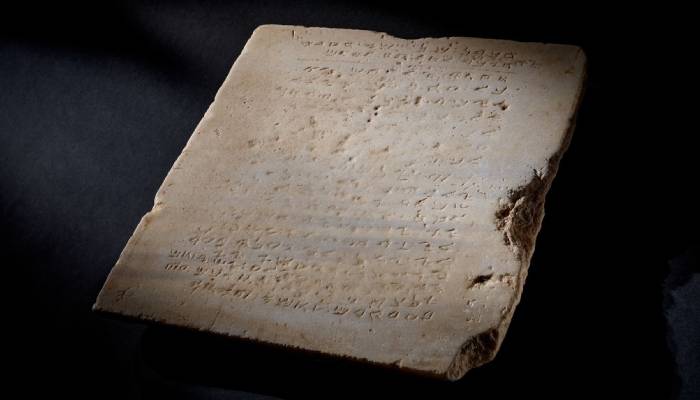
A stone tablet, believed to be the oldest known tablet inscribed with the Ten Commandments in Paleo-Hebrew script is set to be auctioned on December 18.
As per multiple outlets, the marble slab weighing 155 pounds (52 kilograms) was discovered during railroad excavations along the southern coast of Israel in 1913.
The artefact was initially not recognized as a historically significant find.
Sotheby's wrote in a description of the product, "The Ten Commandments: The earliest surviving inscribed tablet of the Ten Commandments, incised during the late Roman-Byzantine era, The Holy Land, (ca. 300–800 CE). The Only Complete Example Of A Ten Commandments Tablet From This Early Period."
The description added, "White marble tablet, approximately 24 ⅞ x 22 ⅛ x 2 ⅜ inches (632 x 562 x 62 mm), weighing approximately 115 pounds (52 kg), neatly chisel-inscribed with the Mosaic Ten Commandments in their Israelite Samaritan version, 20 lines in a Paleo-Hebrew script, each line containing between eleven and fifteen characters, with margins of about 10 cm on either side."
The stone tablet was used as a paving stone in a local home until 1943, when it was sold to a scholar who recognized its historical importance.
The text on the slab contains Biblical verses known to both Christian and Jewish traditions but excludes the third commandment, which prohibits taking the Lord’s name in vain.
Instead, it includes a new command to worship Mount Gerizim, a sacred location for the Samaritans.
Sotheby’s predicts the tablet to be sold for a price between $1 million and $2 million at auction.












